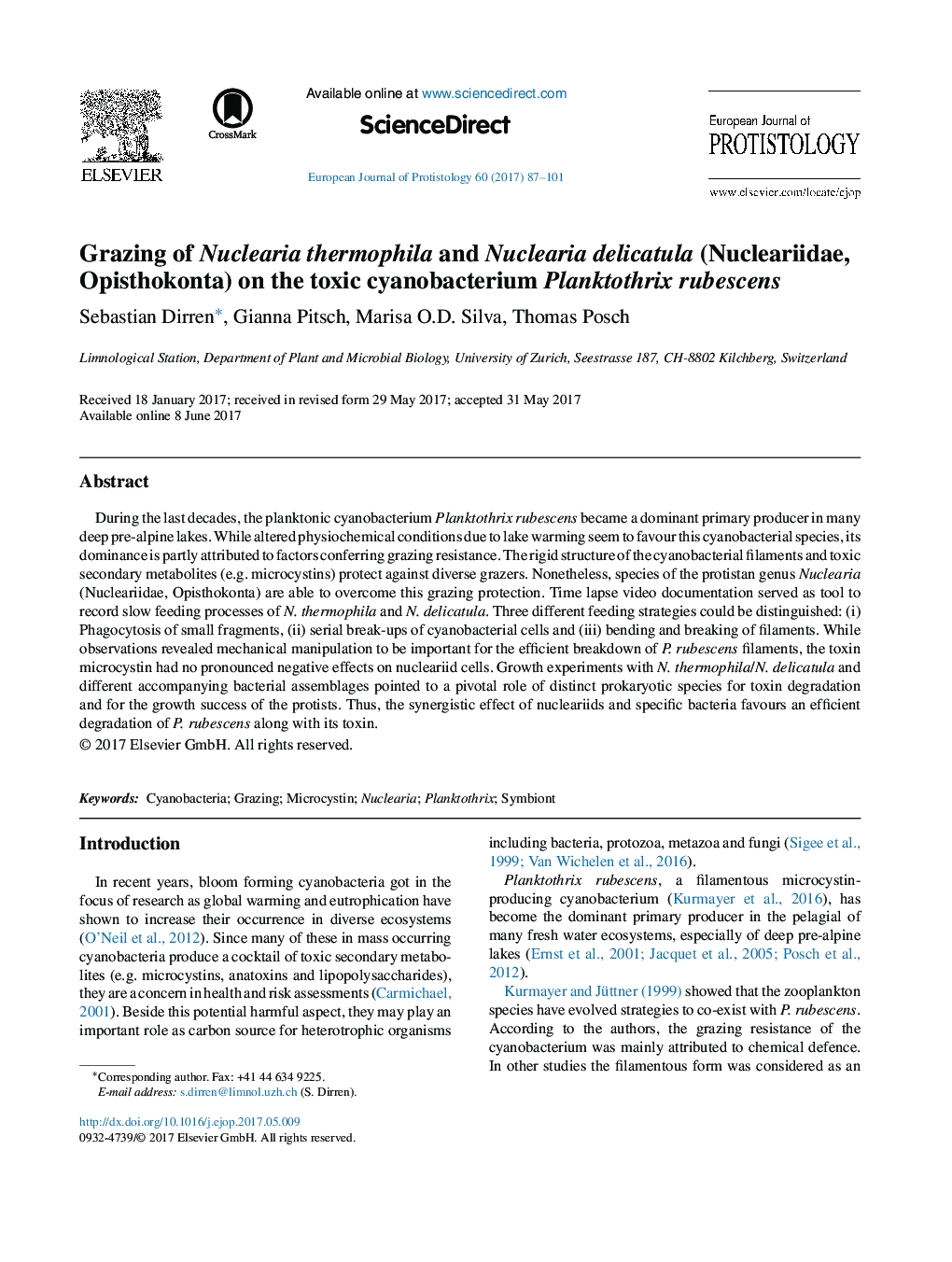| کد مقاله | کد نشریه | سال انتشار | مقاله انگلیسی | نسخه تمام متن |
|---|---|---|---|---|
| 5517520 | 1543275 | 2017 | 15 صفحه PDF | دانلود رایگان |

- Planktothrix rubescens evolved strategies conferring grazing protection.
- Species of the protistan genus Nuclearia are able to feed on Planktothrix rubescens.
- Mechanical manipulation facilitates the break-down of cyanobacterial filaments.
- Toxins stored in the food organism are excreted by nucleariid cells.
- Accompanying bacteria degrade the released cyanotoxin.
During the last decades, the planktonic cyanobacterium Planktothrix rubescens became a dominant primary producer in many deep pre-alpine lakes. While altered physiochemical conditions due to lake warming seem to favour this cyanobacterial species, its dominance is partly attributed to factors conferring grazing resistance. The rigid structure of the cyanobacterial filaments and toxic secondary metabolites (e.g. microcystins) protect against diverse grazers. Nonetheless, species of the protistan genus Nuclearia (Nucleariidae, Opisthokonta) are able to overcome this grazing protection. Time lapse video documentation served as tool to record slow feeding processes of N. thermophila and N. delicatula. Three different feeding strategies could be distinguished: (i) Phagocytosis of small fragments, (ii) serial break-ups of cyanobacterial cells and (iii) bending and breaking of filaments. While observations revealed mechanical manipulation to be important for the efficient breakdown of P. rubescens filaments, the toxin microcystin had no pronounced negative effects on nucleariid cells. Growth experiments with N. thermophila/N. delicatula and different accompanying bacterial assemblages pointed to a pivotal role of distinct prokaryotic species for toxin degradation and for the growth success of the protists. Thus, the synergistic effect of nucleariids and specific bacteria favours an efficient degradation of P. rubescens along with its toxin.
217
Journal: European Journal of Protistology - Volume 60, August 2017, Pages 87-101